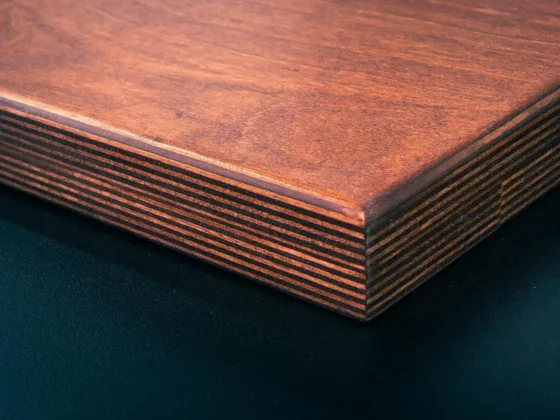Table of Contents Show
Are you tired of tossing and turning every night? It’s time to find your perfect mattress. A quality mattress can significantly impact your sleep quality and daytime energy levels. Choosing the right one can feel overwhelming with so many options available.
This guide will break down essential factors to consider, helping you select the ideal mattress for your needs. Discover how your sleeping position, firmness preferences, and material choices can enhance your sleep experience and ensure you wake up refreshed each morning.
Why the Right Mattress Matters
Your mattress affects your sleep more than you might think. Sleeping on the wrong one can lead to back pain, stiffness, or even poor sleep quality.
A good mattress:
- Supports your body
- Keeps your spine aligned
- Helps you feel comfortable all night long
It can also improve your mood and energy levels during the day.
Things to Consider When Choosing a Mattress
1. Your Sleeping Position
How you sleep affects what kind of mattress you need. Here’s a quick guide:
- Back Sleepers: Medium-firm mattresses are great because they support the natural curve of your back.
- Side Sleepers: A soft mattress can cushion your shoulders and hips, reducing pressure points.
- Stomach Sleepers: A firm mattress keeps your body from sinking and keeps your spine straight.
2. Firmness Level
The firmness of a mattress is about how soft or hard it feels. Everyone has their own preference, but here’s a basic idea:
- Soft: Best for people who like a cozy, plush feel.
- Medium: Good for most people, especially if you move around a lot while sleeping.
- Firm: Best for those who need extra support, like stomach sleepers or heavier individuals.
3. Material
The material of a mattress can change how it feels and performs. Here are the most common types:
- Memory Foam: Soft and molds to your body. It’s great for relieving pain in your joints or back.
- Innerspring: These have coils inside for support and a bit of bounce. They’re a classic choice.
- Hybrid: A mix of foam and coils. These give you the benefits of both support and comfort.
- Latex: A natural material that’s bouncy and breathable. It’s good for people who get hot at night.
4. Sharing the Bed?
If you sleep with a partner, look for a mattress that doesn’t transfer motion. This means you won’t feel them moving around during the night. Memory foam and hybrid mattresses are great for this.
5. Stay Cool
Do you wake up feeling too hot? Some mattresses are designed to keep you cool. Look for ones with gel layers, breathable covers, or materials like latex.
6. Your Budget
Mattresses come in all price ranges. While it’s tempting to go for the cheapest option, remember that a good mattress is an investment in your health. Set a budget and look for the best quality you can afford.
RELATED: 10 Factors to Consider When Choosing a Personal Bedroom Mattress
Popular Mattress Types and Who They’re For
Memory Foam Mattresses
- Perfect for people with aches and pains.
- Offers great support and pressure relief.
- Excellent at isolating motion, so you won’t feel your partner moving.
Innerspring Mattresses
- Affordable and widely available.
- Good for people who like a bouncy feel.
- Provides strong support but may not be as soft as foam.
Hybrid Mattresses
- Combines the best features of foam and springs.
- Provides support and comfort for most sleeping positions.
- A good choice if you want the benefits of both materials.
Latex Mattresses
- Ideal for people who want a bouncy yet supportive feel.
- Natural, durable, and eco-friendly.
- Stays cool and is resistant to dust and allergens.
How to Test a Mattress
Testing a mattress is essential for ensuring comfort and support. Many mattress companies provide trial periods, allowing customers to use the mattress at home for several weeks or even months.
This feature is crucial because it often requires time for your body to adjust to a new sleeping surface. You want to feel how the mattress affects your sleep over time.
- Aim for a trial period of at least 30 days to allow for this adjustment.
- Before making a purchase, carefully review the return policy.
- Ensure it is clear and fair, as this will help you make an informed decision.
- A good return policy can give you peace of mind while trying out your new mattress.
Tips to Make Your Mattress Last Longer
To keep your mattress in great shape:
- Use a Mattress Protector: This keeps spills, stains, and dust away.
- Rotate the Mattress: Turn it every 3–6 months to prevent uneven wear.
- Clean It Regularly: Vacuum it to remove dust and follow the care instructions.
- Avoid Jumping: This can damage the inside of the mattress.
Signs You Need a New Mattress
Even the best mattresses wear out over time. Here’s how to know it’s time for a replacement:
- You wake up with back pain or stiffness.
- The mattress is sagging or has lumps.
- It’s more than 7–10 years old, depending on the type.
- You’re sneezing or having allergies more often, which could mean dust mites.
Final Thoughts: Find Your Perfect Mattress
The right mattress can change your life by improving your sleep and boosting your health. Take the time to think about what you need, test a few options, and don’t rush your decision. Whether you prefer a soft memory foam mattress or a supportive hybrid, there’s a perfect match out there for everyone.
Remember, when you find your perfect mattress, you’re investing in better sleep and a happier, healthier life. Sweet dreams!










